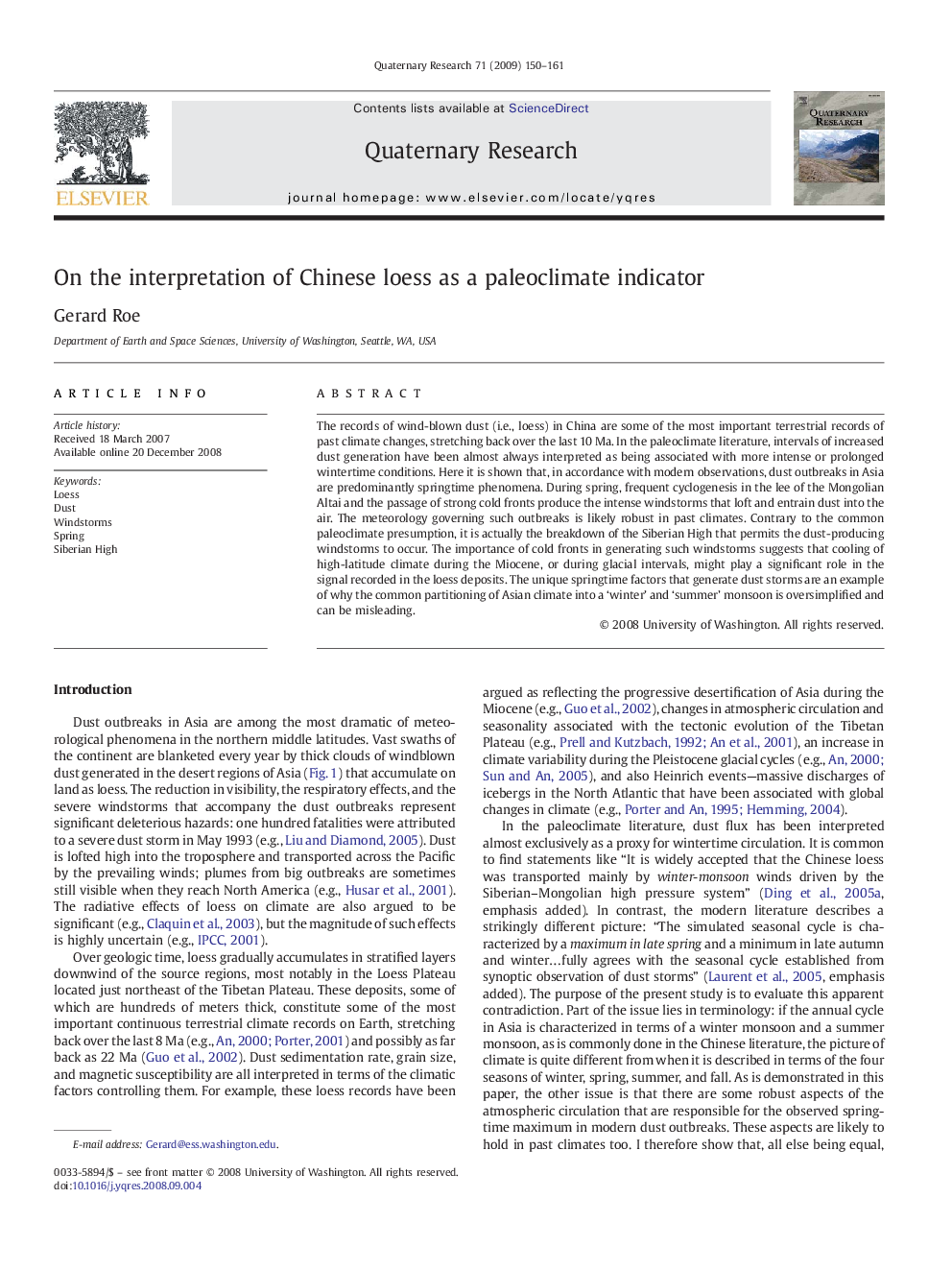| کد مقاله | کد نشریه | سال انتشار | مقاله انگلیسی | نسخه تمام متن |
|---|---|---|---|---|
| 1046076 | 944857 | 2009 | 12 صفحه PDF | دانلود رایگان |

The records of wind-blown dust (i.e., loess) in China are some of the most important terrestrial records of past climate changes, stretching back over the last 10 Ma. In the paleoclimate literature, intervals of increased dust generation have been almost always interpreted as being associated with more intense or prolonged wintertime conditions. Here it is shown that, in accordance with modern observations, dust outbreaks in Asia are predominantly springtime phenomena. During spring, frequent cyclogenesis in the lee of the Mongolian Altai and the passage of strong cold fronts produce the intense windstorms that loft and entrain dust into the air. The meteorology governing such outbreaks is likely robust in past climates. Contrary to the common paleoclimate presumption, it is actually the breakdown of the Siberian High that permits the dust-producing windstorms to occur. The importance of cold fronts in generating such windstorms suggests that cooling of high-latitude climate during the Miocene, or during glacial intervals, might play a significant role in the signal recorded in the loess deposits. The unique springtime factors that generate dust storms are an example of why the common partitioning of Asian climate into a ‘winter’ and ‘summer’ monsoon is oversimplified and can be misleading.
Journal: Quaternary Research - Volume 71, Issue 2, March 2009, Pages 150–161